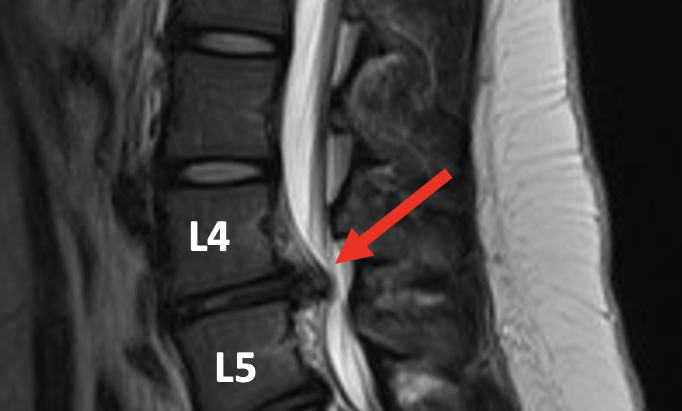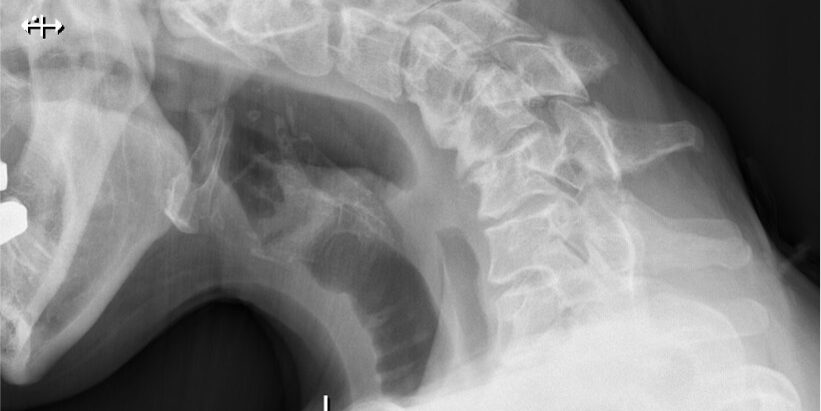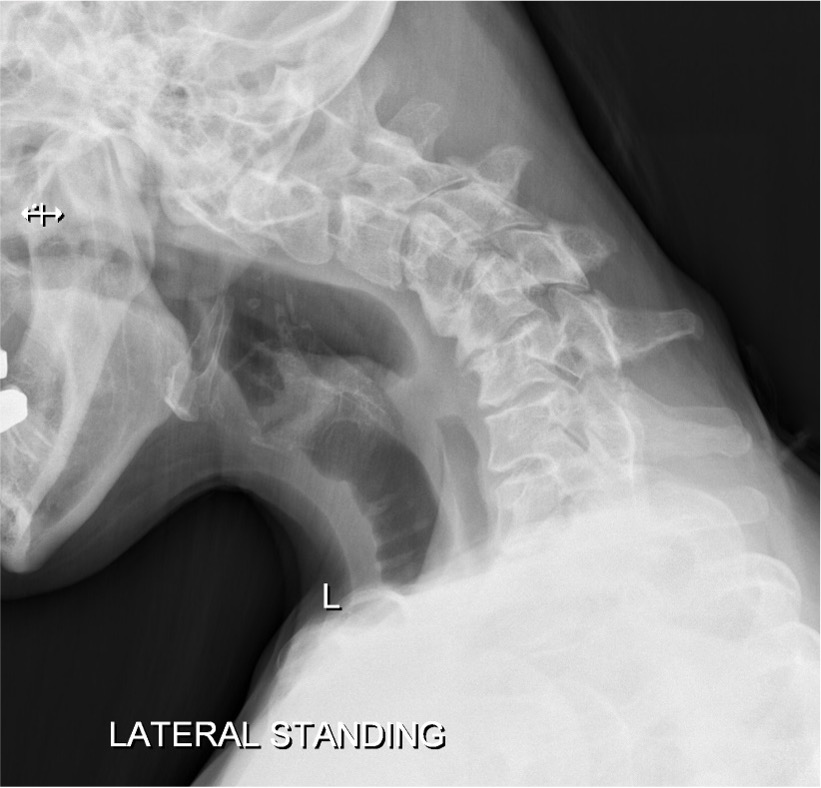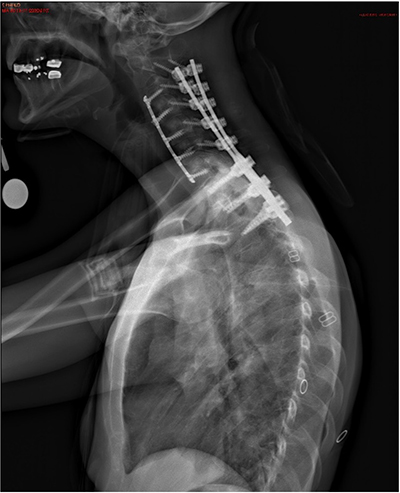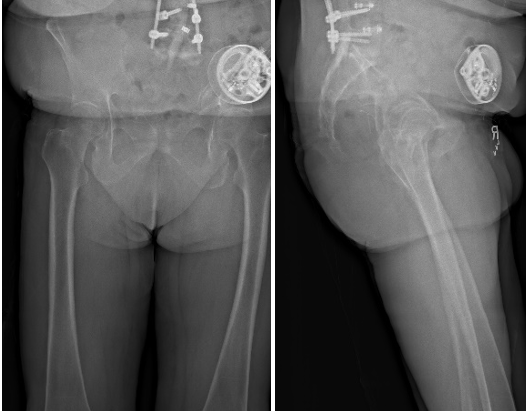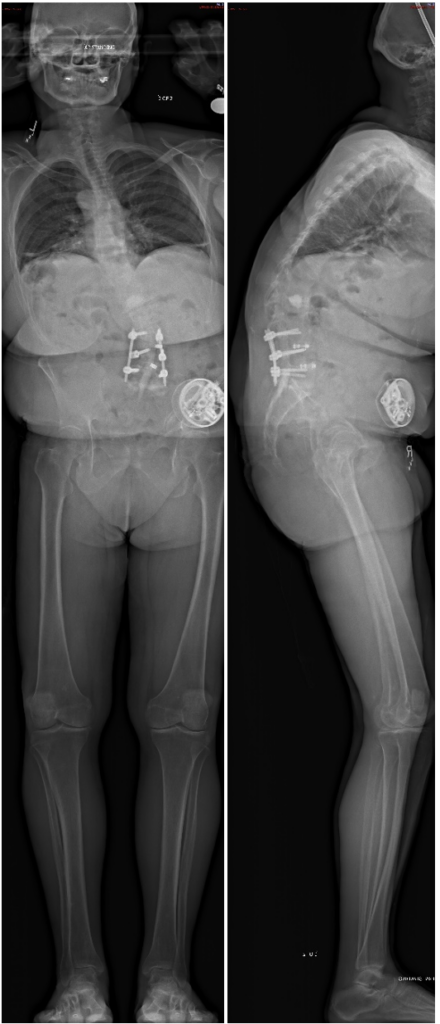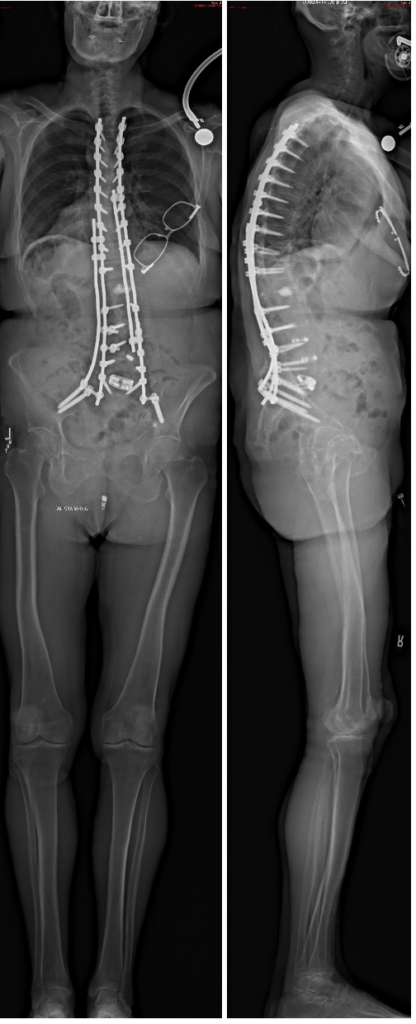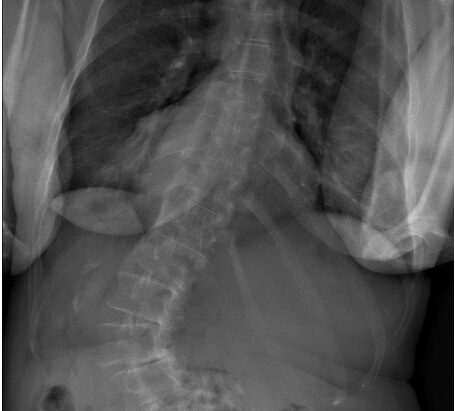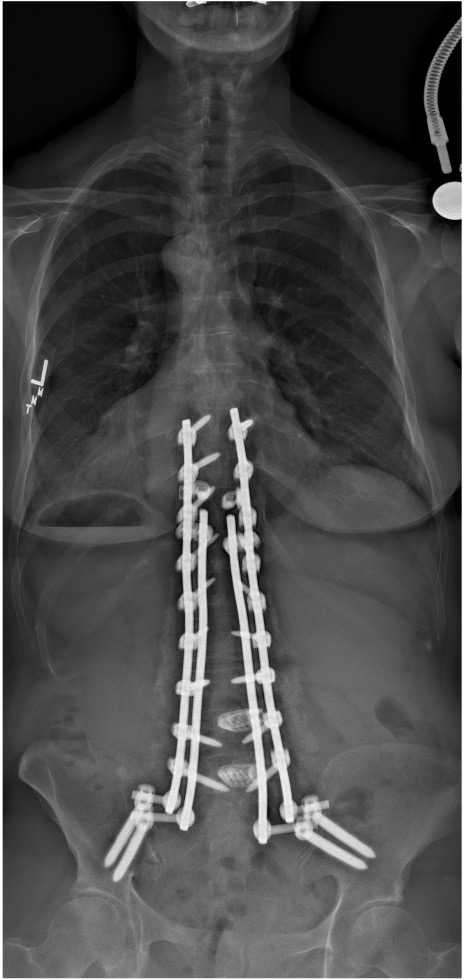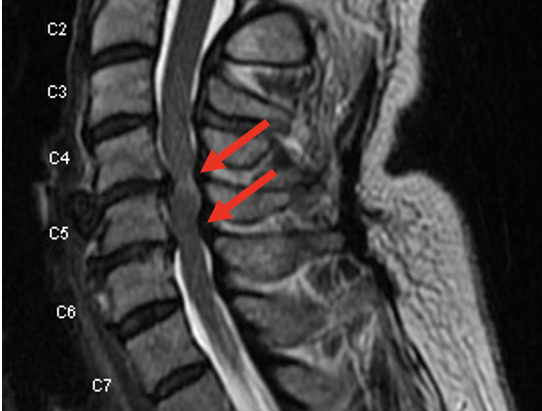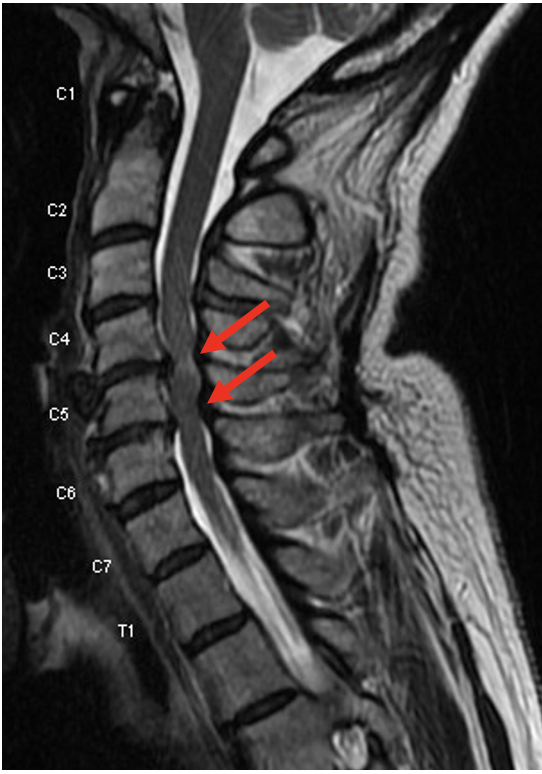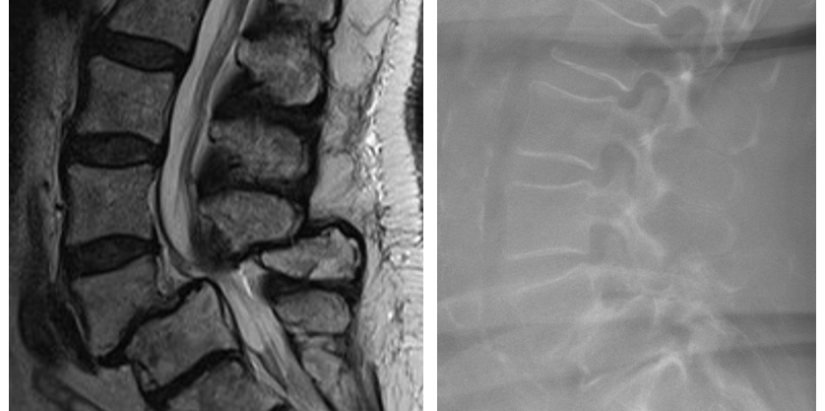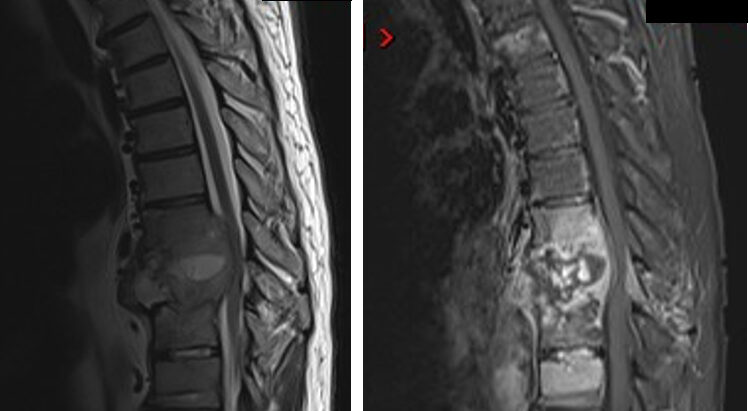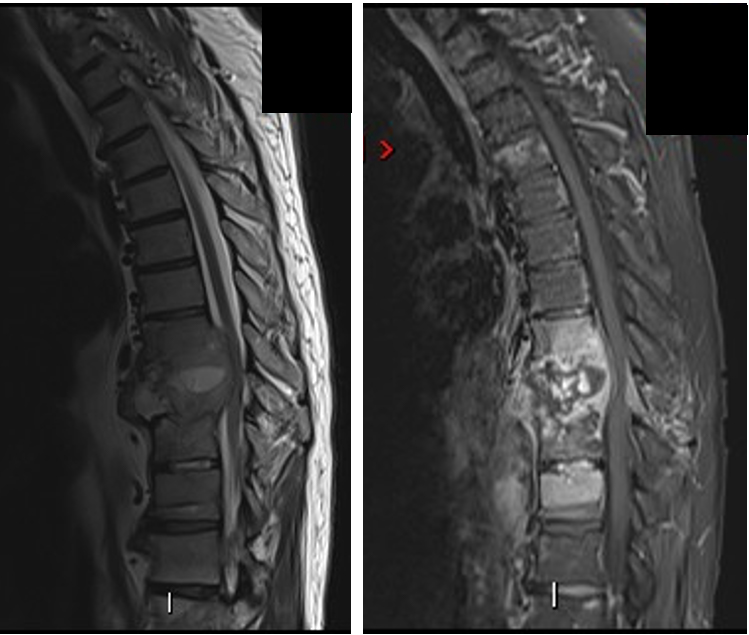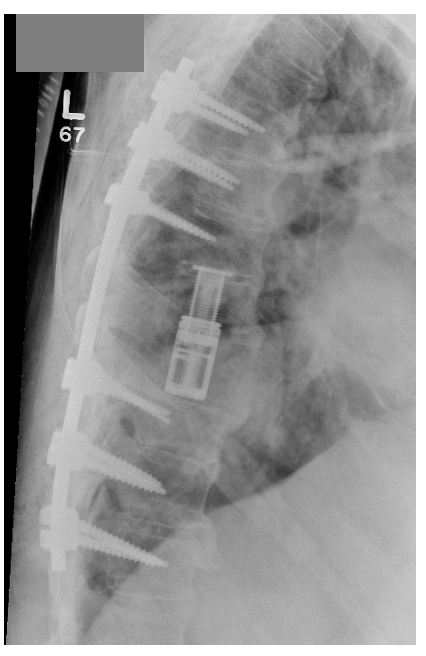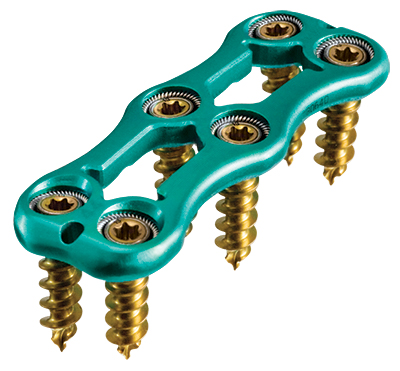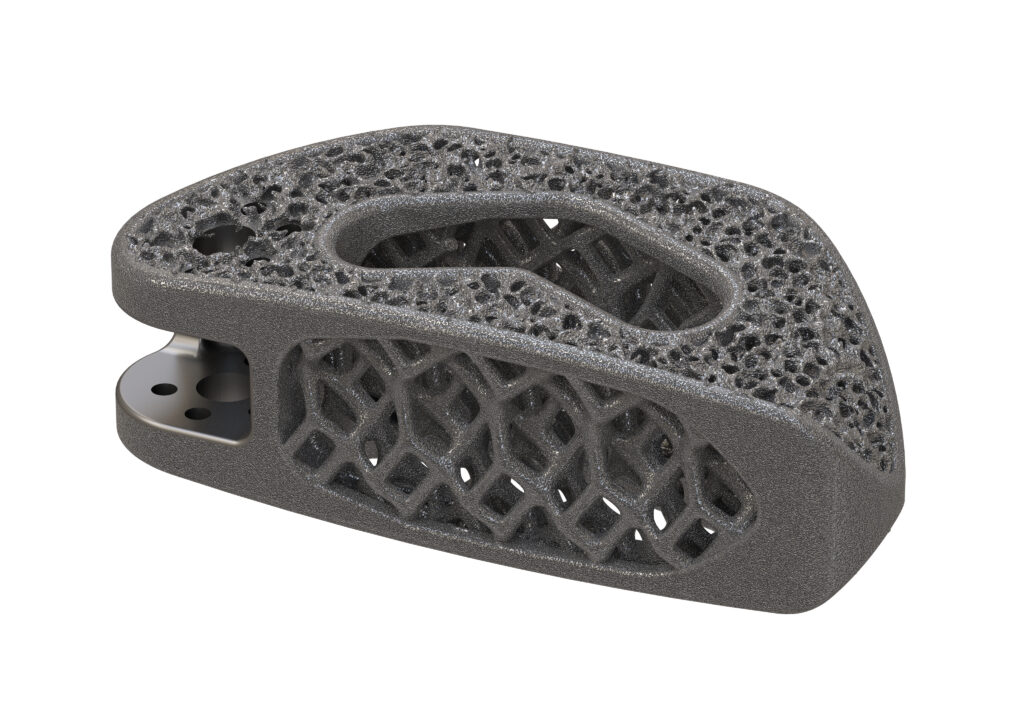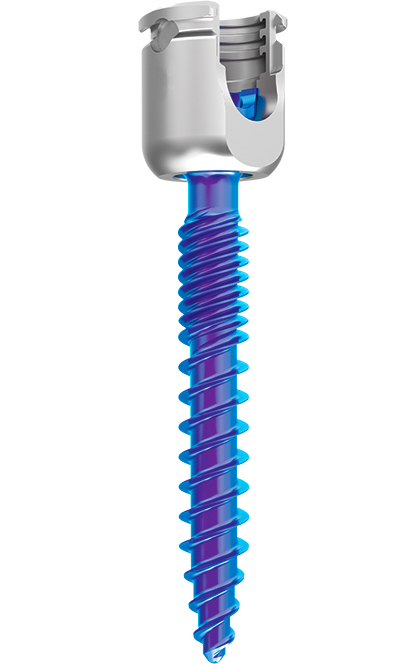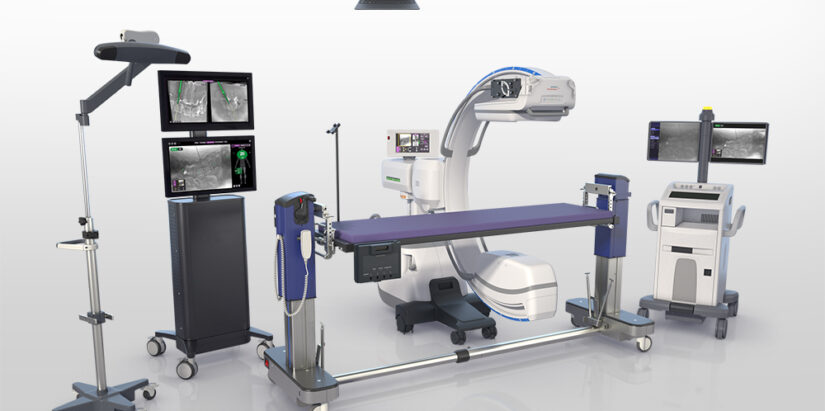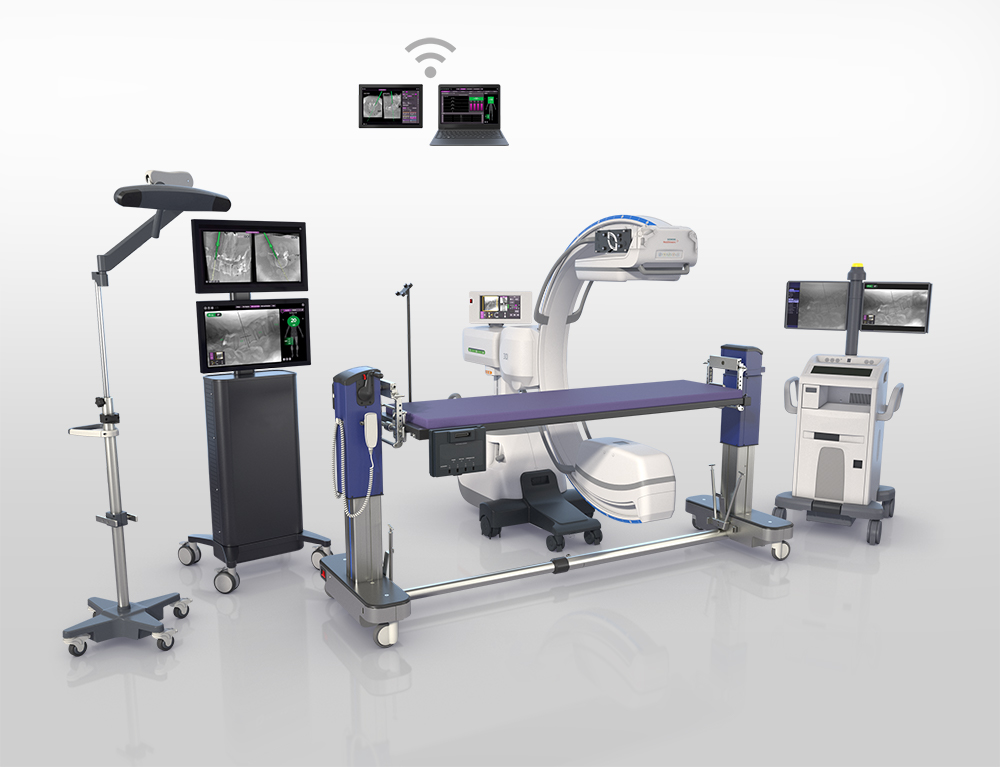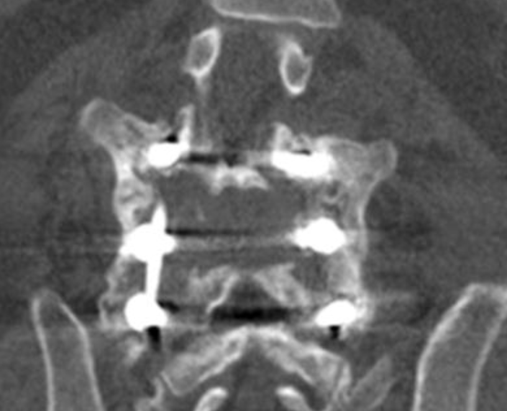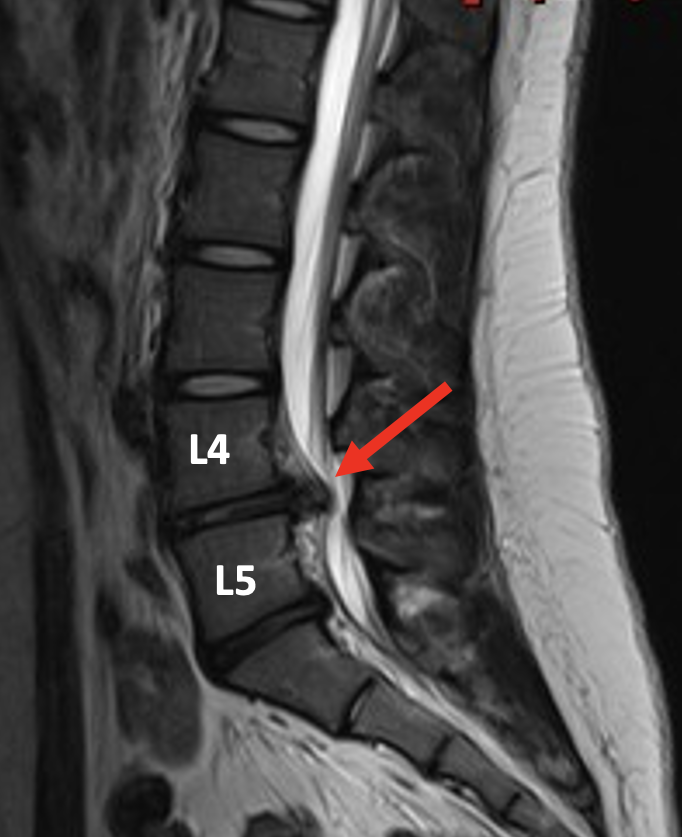
MRI of lumbar spine showing herniated L4-L5 disc (red arrow).

Axial image (cross-section) of lumbar MRI showing herniated L4-L5 disc (red arrow) and compressed right L5 nerve (yellow arrow).
What is Microdiscectomy?
A microdiscectomy is a surgical procedure to remove a herniated disc in the spine.
Discs are round cushions sitting between the vertebrae (bones) of the spine. Discs consist of a gel-like center called the nucleus pulposus, which is encased by a strong tissue called the annulus fibrosus. They act as shock absorbers when we walk and run, and they let us bend and move without our vertebrae rubbing against each other.
Sometimes, whether due to aging or traumatic injury, these portions of these discs can herniate and push out from between the vertebrae. The gel-like center can push through the encasing tissue (annulus fibrosis) and put pressure on spinal nerves or the spinal cord. This can lead to pain, numbness, and weakness in the back, legs, or arms. The goal of the discectomy is to relieve this pressure on the nerves by removing the herniated disc.
Why would someone undergo this procedure?
A herniated disc can often be relieved with conservative treatments such as rest, pain medications, and physical therapy. However, if those non-surgical treatments fail to relieve the symptoms after a period of time (usually a few weeks to months), a discectomy may be considered, especially in the following situations:
- There is so much pain that it hinders moving around and performing daily activities
- Persistent numbness or weakness from the disc pressing on the nerves
- Problems with bladder or bowel control
- Trouble standing or walking
Regardless, discectomy should only be recommended as a treatment option after your doctor completes a number of assessments. These include the patient’s spinal condition, age, activity levels, medical history, etc. Physical examinations and diagnostic tests (X-rays, MRI scans) are often carried out to confirm the diagnosis and rule out any other conditions. Talk to your doctor or contact us to set up an appointment and see if discectomy is the appropriate treatment for you.
How is Discectomy performed?
The patient will have general anesthesia administered so that they are unconscious during the procedure. They will be either lying face down. Once the patient is asleep, the surgeon will make an incision over the affected disc. Muscles and soft tissues are retracted to gain vision and accessibility to the herniated disc. Sometimes bone and ligaments may have to be removed so the surgeon can access the disc without damaging nerve tissue, this is called a laminectomy. For more information on laminectomy, visit this page here.
Once the surgeon has a clear view and enough access, they will remove the section of protruding disc and any other disc fragments. The muscles and soft tissues are put back in place, the incision is closed, and the patient is taken to the recovery room.
What does postoperative recovery look like?
Some patients may feel immediate relief after surgery, but for others it may require time for symptoms to improve. You may feel pain at the incision site as well, but pain medications may be prescribed to help relieve this post-op pain. How long you stay at the hospital will vary but it usually won’t be more than a few days. Most people with jobs that are not physically demanding will be able to return to their normal daily lives after 2-4 weeks. Those whose lives demand more physical labor should expect to return to work after 6-8 weeks or sometimes longer. Regardless, all physical therapy and other treatments prescribed by your surgeon will play a role in your recovery time, do not ignore them.
What are the risks and complications?
As with all surgical procedures, risks and complication can arise and may include but are not limited to:
- Blood loss
- Infection
- Spinal fluid leakage
- Injury to nerve tissue
- Recurrent herniation (another piece of disc extruding from the disc space)
All risks should be discussed with your surgeon before the procedure. You should make an educated and informed decision beforehand, so do not hesitate to ask any and all questions. If you have any questions, comments, or concerns pertaining to the discectomy procedure, contact us through our website to set up an appointment.
Book an Appointment
Contact Information
Address: 415 Ray C Hunt Dr, Charlottesville, VA 22908
Phone: (434)-243-6339
Hours:
Monday: 8AM–5PM
Tuesday: 8AM–5PM
Wednesday: 8AM–5PM
Thursday: 8AM–5PM
Friday: 8AM–5PM
Saturday: Closed
Sunday: Closed


